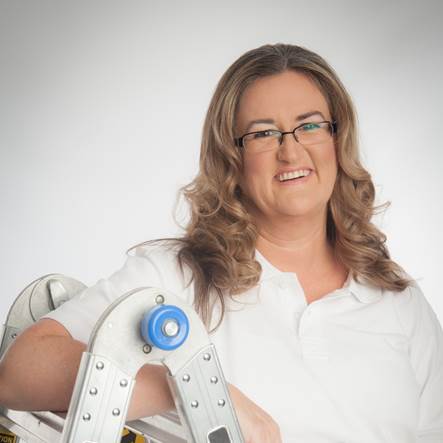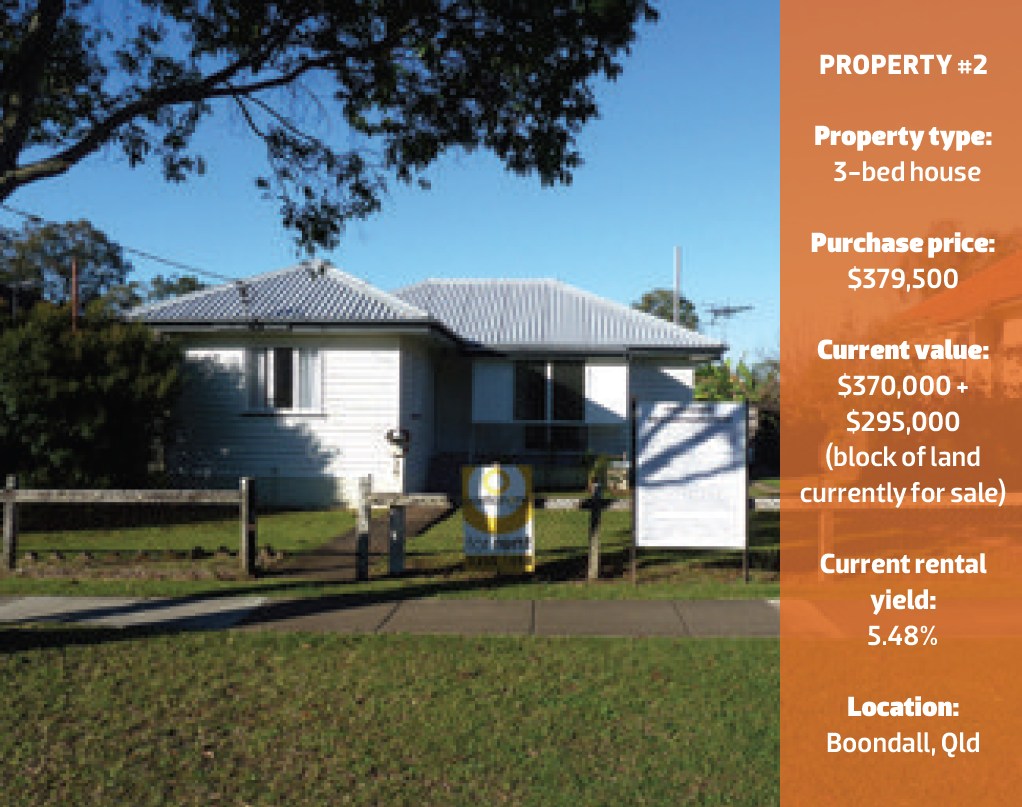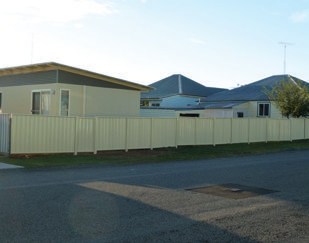Conventional wisdom tells us that there is value to be had in learning from the hard lessons often handed out by life. A great many people struggle to do so, but 46-year-old Queensland accountant Audra Tracy hasn’t. Instead, the failure of her first marriage, combined with the example of her parents who struggled in retirement, inspired her to focus on property investment as a means of building a better future.
“The main trigger for me was the onset of the GFC,” she says. “My managed funds were whittled away by 60%, yet my investment property grew significantly in value. That was a major turning point for my serious start in property investing.”
 She was determined never to be financially vulnerable again, so she sought out the education she needed and used her professional skills to build up a formidable portfolio. While her property investment journey had started with several purchases prior to 2007, in the seven years since she has acquired 17 properties. Her portfolio is worth $5.9m in total and has a net worth of $1.8m.
She was determined never to be financially vulnerable again, so she sought out the education she needed and used her professional skills to build up a formidable portfolio. While her property investment journey had started with several purchases prior to 2007, in the seven years since she has acquired 17 properties. Her portfolio is worth $5.9m in total and has a net worth of $1.8m.
On top of this, Audra’s investment journey has been so successful that she has now been publicly recognised for it. It was recently announced that she is the 2014 winner of Property Women’s Property Woman of the Year award.
What began as an interest has become an extreme passion for property, bordering on an addiction, the mother of six (and grandmother of four) adds. This has meant an extremely busy few years for Audra and her second husband.
However, her portfolio is now substantial enough to allow her husband to stop working 9 to 5 and instead focus on managing their investments – without the couple being financially compromised or worried. This decision was made earlier this year, after the couple realised they could do it. So far the only difficulty they have encountered is that Audra is slightly reluctant to relinquish full control, she says.
EVOLVING STRATEGY
When Audra bought her first few properties – using $10,500 in savings to kick-start her investment – she had no particular strategy in place. If anything, she had a buy-and-hold, hope-and-pray strategy, she says.
“The only knowledge I employed was familiarity with the area and starting with something that I could afford and maintain on my own.”
When she started to build her portfolio seriously, she added a few more strings to her strategy bow. She sought out locations that were more desirable than others, with properties which had an element of scarcity or a twist. “Basically, they had to have the potential to be further improved by development or renovation. They also had to have capital growth that outperformed the norm.”
These purchases are still part of her portfolio, but her strategies have evolved over time. She still employs a similar set of selection criteria when it comes to location and property type. But she has a focus on the manufacture of capital growth to add value to the portfolio.
“The properties we invest in do not start out necessarily as cash flow positive properties, but they end up as cash flow positive and with significant capital growth – thanks to the addition of granny flats or single-unit developments.”
As a result, her portfolio is now development orientated and is split between cash generation (sale of vacant land that was created) and hold (holding either the house and land left behind or the generation of new dwellings).
Size: 3-bed house on 614sqm corner block
Interest rate: 4.99% fixed rate with Westpac
Deposit: 20%
PROPERTY FOCUS: GRANNY FLAT ADDITION
One of the first properties Audra deployed her buy-develop-and-hold strategy on was a three-bedroom house in Cessnock, NSW.
RESEARCH
Using RP Data, RealEstate.com.au, local agents, and local council information, Audra knew there was development potential due to impending changes in the city plan. Also, she knew the NSW granny flat approval process was quick and straightforward.
The property itself had a low purchase entry point and offered high cash flow returns. It was a weatherboard and iron house, sitting on a 614sqm corner block, and zoned low medium residential. Further, it was within walking distance of the city centre, shopping and schools.
There was great potential for renovation, a planned granny flat addition, plus an SUD development further down the track, Audra says. “In comparison to the others that I was looking at, this property required less renovation and there were less infrastructure costs for the development application.”
FINANCE
Leveraging off the equity in one of her other properties, Audra bought Cessnock property with a 20% deposit of $40,000. She financed it within the existing trust she and her husband have for the protection of their assets and for estate planning purposes.
This financing decision was dictated by the type of trust structure Audra has, as lenders will only allow a maximum loan-to-value ratio of 80%. The lender is Westpac Banking Corporation and the loan is an interest-only loan, currently at a fixed rate of 4.99%.
The lender was chosen by her mortgage broker, who is fully aware of her strategies and picks the most suitable lender for each property purchase, she explains. “I think this is important because if you select the wrong lending product for your strategy, it could cost you tens of thousands of dollars in the long run.”
STRATEGY
Decisions related to the property were dictated by hard numbers and have paid off. In particular, Audra felt that adding a granny flat on to the property soon after purchase would provide significant added value.
It was the best use of the existing property with minimal outlay in the first instance, she says. “It is cash flow positively geared and we can still build a single-unit development later in the life of the project.”
CHALLENGES
There have been no issues in holding the property. In fact, the only challenge Audra encountered was that she was not the only interested party at the time of purchase and was at risk of being gazumped.
“The seller accepted two offers and stated that the first to go unconditional would be the successful buyer. This meant that I had to have finance unconditional, build and pest inspections performed, accept the condition of the property, and have the Section 149 obtained before the other buyer.”
Boondall is a suburb familiar to Audra as she has a number of properties in the immediate area. She had been looking for something suitable for her next subdivision project when this particular property came up for auction.
RESEARCH
Situated close to transport and other essential infrastructure, the property was a three-bedroom weatherboard and tile house on a 1,012sqm block, zoned low residential, with potential for renovation and subdivision. A major point of attraction was that it wasn’t necessary to move the house for a subdivision, and it had good stormwater and sewer drainage placement.
It was the type of property she was looking for and met all the subdivision criteria she had developed for the price it was being sold for, Audra says. “Therefore I knew it would provide the return that I was looking for. I didn’t need to spend much time working the numbers to know it was the right property.”
Size: 3-bed house on 1,012 sqm block
Interest rate: 5.09% fixed rate with AMP
Deposit: 20%
FINANCE
She bought the property with a 20% deposit of $75.9k, which she had ready for the purpose after selling a block of land. “I wanted to keep as much cash in my pocket as possible, to proceed with the development application and renovation, so I did ensure that I borrowed to my maximum capacity.”
The property was financed within her existing trust and her mortgage broker selected the lender, AMP Limited. It is an interest-only loan, which is currently at a fixed rate of 5.09%.
CHALLENGES
Audra did face a buying challenge with this property: she had to buy it at auction, and it was the first time she had purchased via this method.
“There were other developers in attendance, so I had to make sure I didn’t get into the emotional buying game. I had to keep it all about the numbers, know what my maximum purchase price was, and stick to it.”
STRATEGY
After purchasing the property, Audra subdivided it into sections of 412sqm and 600sqm and renovated the existing house. Originally, she planned to sell both the land and the house. But she decided to hold the house and sell the land as this would present her with a cash flow positive property. Audra is particularly happy with the performance of this property, which she says is her best example of this strategy.
Size: 2-bed house on 607sqm corner block
Interest rate: Fixed and variable interest-only loans at rates of 5.01% and 4.99% resepctively - with CBA.
Deposit: 20%
PROPERTY FOCUS: FIRST BUILD
At the time that Audra bought this property, she and her husband had just sold their principal place of residence (PPOR) due to a work transfer from NSW to Queensland. This meant she was looking for a new PPOR, but one with development potential.
RESEARCH
She wanted a property within a 7km radius of the Brisbane CBD, where the land zoning and block size were conducive to a single-unit development (of two to four townhouses), with correctly located pipework/infrastructure. Also, the existing house needed to be liveable but with renovations required.
Given her specific criteria, as well as the small window she had to complete the purchase because of the transfer timing, Audra used a buyer’s agent to look for a property that met her needs. The market for this type of property was hotting up, which meant she had limited choices. In the end, she put four offers forward.
Audra’s offer on this property – which was a weatherboard two-bedroom house on a 607sqm corner block – was accepted, and the property ticked all her boxes. It was the right purchase price, vacant on possession, and offered a solid opportunity to develop.
Further, the proposed new city plan didn’t allow for single-unit development, which created a unique opportunity to move quickly and gain added capital growth on the property once a development approval was attached to it, Audra says.
“My gut instinct told me that I wouldn’t lose any money on it. It was a good purchase price for the area. But the development potential was an added bonus as the agent hadn’t priced the property with development potential in mind.”
FINANCE
Thanks to the sale of the couple’s former PPOR, Audra put down a 20% deposit of $96,000. The property was financed under her and her husband’s names because, first and foremost, it was to be their new PPOR.
With the help of her broker, she secured a loan with the Commonwealth Bank. The interest rate is currently split between fixed and variable interest-only loans at rates of 5.01% and 4.99% respectively. The variable loan is nullified by an offset account that she has for the full value of that part of the loan.
STRATEGY
In terms of performance, Audra doesn’t believe she could have done any better with this property, which was her first big build project.
“The current development approval is for two additional single-unit developments. Most people I spoke to about this property said I could have only added one additional single-unit development or two strata-titled townhouses. So I think I have maximised its use, and with no challenges to date.”
DRIVEN BY PASSION
The world of property is one that Audra loves being part of. She just wishes she had started investing earlier in her life. For this reason, she plans to encourage and educate her children to take advantage of the benefits of property investing earlier rather than later.
However, her end goal is to have fun and be happy, travel the world (the couple’s portfolio allows them to reward themselves with a decent overseas holiday every year), and eventually retire from her job to become a full-time property investor. She also wants to provide a nest egg for her children and grandchildren.
Audra says she feels certain she is actually addicted to property.
“I do have a set goal that I am striving for which also keeps me motivated – but not as much as my passion, or my addiction as I call it.”
- Education is essential before getting into the world of property investing. Subscribe to property magazines, attend seminars, network with like-minded people, and invest in educational books and DVDs.
- Success does not come quickly or easily. Work hard, stay focused, and understand your investing environment well. Be flexible and adapt to changing markets.
- Be organised with your finances, record-keeping and paperwork. Keep all of it up to date, at hand and ready to go.
- Ensure your systems are in place and surround yourself with a great team of professionals. Always have your ‘A Team’ (which should include your mortgage broker, real estate agent, solicitor, and mentor) at hand.
- Build a network of people who you trust and who support you. This network doesn’t have to just include mentors and other experienced property investors. For example, in my case, my network includes my extremely supportive husband.
.jpg)


